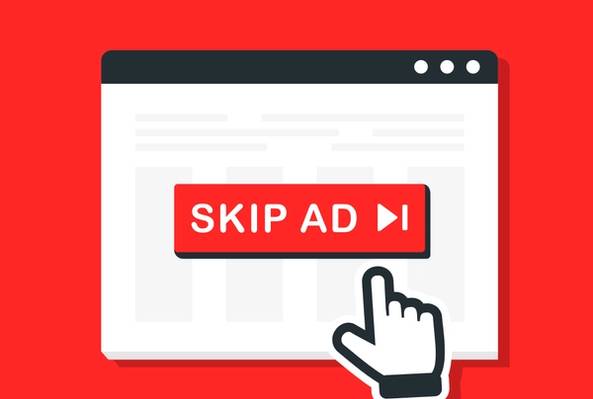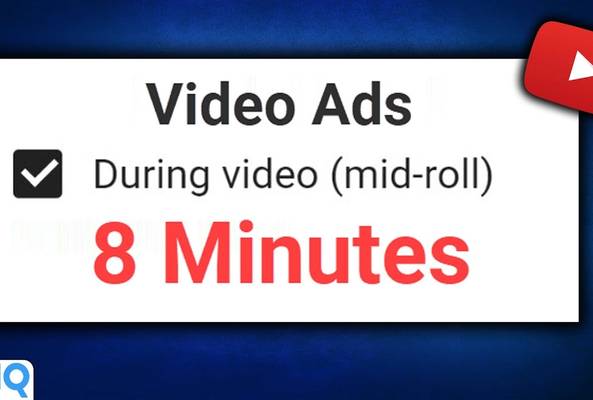Lydia Sweatt is a writer, bookworm, and bass guitar enthusiast. When she goes outside, a bicycle goes with her.
Google AdSense 101: How to Benefit from Ad Revenue on YouTube


In 2019, YouTube made $15 billion in revenue from advertisements alone. Part of that revenue is used to pay video creators, so every YouTuber should learn about the service that makes it all possible: Google AdSense.
This invaluable tool helps creators monetize their content with ads. It’s one of the first steps to building a YouTube career, which requires several steps:
- Creators join YouTube with two goals in mind: attracting 1,000 subscribers and 4,000 hours of channel Watch Time. When that happens, creators can apply for the YouTube Partner Program (YPP) and monetize their content.
- As part of the YPP application, creators must set up a Google AdSense account to collect ad revenue.
- Google AdSense serves ads on creators’ videos. To increase the likelihood of viewers watching those ads, Google AdSense uses personalized targeting to match relevant ads with viewers' interests.
- YouTube’s hardworking creators get paid.
Google AdSense and the YouTube journey are complex, so of course, there are fine-print details to understand. The most important aspect is how revenue is calculated. When you join the YPP, you won't earn all of the money that comes from ads; creators earn 55% of the revenue while YouTube takes the remaining 45%.
That’s the high-level summary. But to learn more about how Google AdSense works on YouTube, just keep reading.
What Kind of Ads Are Shown on YouTube Videos?
There are several ad formats on YouTube. When you monetize a video, you may see any of the following ad types on your content:
- Display ads: Desktop ads that appear to the right of a video, directly above YouTube’s video suggestions.
- Overlay ads: Semi-transparent desktop ads that appear near the bottom of a video.
- Skippable video ads: Desktop, mobile, and TV ads (including gaming consoles) that can be skipped after 5 seconds. These appear at any point in a video.
- Non-skippable video ads: Desktop and mobile ads that can’t be skipped.
- Bumper ads: Non-skippable desktop and mobile ads of up to six seconds.
- Sponsored cards: Desktop and mobile ads that show content related to the video’s topic (products, courses, etc.).
How Much Money Can You Make From Google AdSense Revenue?
In July 2020, YouTube announced a new revenue metric called RPM (revenue per mille). It helps creators understand their earnings by showing the total revenue earned per 1,000 video views.
When you want to track your monthly income, this is the number to pay attention to. It includes the ad revenue you’ve earned after YouTube takes its 45% cut, which is helpful information. RPM also includes the money you’ve made from YouTube’s extra monetization features, such as Super Chats and channel memberships.
To view your RPM, go to the YouTube Studio and click the revenue tab on your channel analytics page. If you need a tutorial on how to do that, we’ve got one for you right here:
Because RPM is a new metric, there isn’t much data on the average RPM for creators. CPM, however, is not new. This term stands for cost per millie and represents the cost of every 1,000 ad impressions on YouTube. Viewing this number tells you what YouTube is charging advertisers before the platform takes it’s 45% cut.
CPM focuses on advertising prices alone, so use this metric for a broad view of Google AdSense earnings. According to Media Shark, the average CPM is between $6 and $8 in the U.S. Under this range, advertisers would pay $6 to $8 per 1,000 ad impressions.
Creators don't receive the entire CPM, though. After YouTube takes it’s 45% cut, you can expect to make $3 to $4 per 1,000 video views (on average).
Which Content Is Considered Advertiser Friendly?
Not all content is suitable for advertisers. If you want to make decent money on YouTube, consider making videos that are advertiser-friendly. That means creating content free of strong profanity and inappropriate themes.
To stay in the clear, refrain from including these 10 things in your content:
- Adult themes
- Violence
- Dehumanization
- Inappropriate language
- Dangerous, harmful acts
- Hate speech
- Drugs, recreational or illegal
- Controversial issues
- Shocking content
- Firearms
The best way to create advertiser-friendly content is to follow YouTube’s Community Guidelines. The Creator Academy shares valuable tips on that subject, so be sure to check it out.
Remember, many advertisers prefer to place ads on positive videos. Therefore, Google AdSense won’t serve ads on content that doesn’t support advertisers’ mission.
How Long Does it Take for YouTube Creators to Receive AdSense Revenue?
Getting your first YouTube check may take a while. Before you can receive the funds in your Google AdSense account, you need to reach the payment threshold in your location.
In the U.S., that amount is $100. When creators have earned that figure or more, YouTube will send the funds to their bank account. If you live outside of the U.S., use this chart to see the payment threshold in your country.
When you reach the payment threshold during any particular month, your earnings appear in Google AdSense near the middle of the following month. So if you earn $200 in January, you’ll see that revenue in your Google AdSense account in mid-February.
Typically, the funds reach your bank account that same month. If they don’t, that means one of three things: There’s a hold on your Google AdSense account, monetization was suspended on your channel, or you violated YouTube’s monetization policies. To troubleshoot, view the YouTube Partner Earnings Overview on this support page.
Google AdSense Revenue and Local Tax Laws
Depending on where you live, your Google Adsense earnings could be taxable income. Local tax laws vary, so YouTube won’t deduct this money from your revenue. Instead, each creator is responsible for handling their taxes, which usually means saving the portion of their income that’s owed to the government.
For more information, view YouTube’s support page about taxable AdSense earnings.
If your YouTube income is taxable, here are some filing tips:
- In some cases, you have to report your Google AdSense revenue on your taxes – especially if you earn more than a specified amount. If so, Google will provide you with the appropriate tax forms. But even if it doesn’t, you should report all taxable income to the government.
- You can deduct qualifying work expenses from your taxes. Be sure to view an updated list of those expenses and use them as a tax write-off.
No matter what, always speak to a tax professional. Our advice (and Google’s) is incomplete and shouldn’t be used by itself when filing taxes.
YouTube and Google AdSense are a complicated pair. But if you take this information and advice to heart, you'll have the power to optimize your ad revenue and make more money on YouTube.


